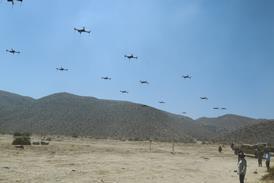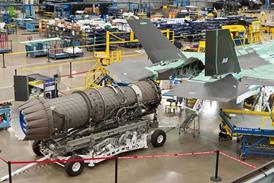Raytheon has demonstrated the upper stage and infrared seeker for a missile-defence derivative of its AIM-120 AMRAAM air-to-air missile intended to engage short- and medium-range ballistic missiles in their boost, ascent or terminal phases, writes Graham Warwick.
Technology being demonstrated under the US Missile Defense Agency's Network Centric Airborne Defence Element (NCADE) programme includes an advanced monopropellant second stage and modified off-the-shelf infrared seeker.
Identical in size, weight and balance to the AIM-120, NCADE would be launched into a vertical climb, discarding the existing solid motor after burn-out and lighting the second stage to provide propulsion and steering. Initially tracking the rocket plume, the seeker would move its aimpoint to the missile body and guide the weapon to a hit-to-kill kinetic-energy intercept.
Under NCADE, Raytheon and Aerojet have fired the hydroxylammonium nitrate thruster, generating more than 150lb (0.7kN) of thrust for longer than 25s. The new, less-toxic liquid propellant provides a high specific impulse, says Mike Booen, vice-president, advanced missile defence.
Two "slightly modified" IR seekers have already demonstrated plume-to-hardbody handover in simulations, and a modified AIM-9X air-to-air missile will be launched from a fighter against a real booster later this year to demonstrate the seeker in flight.
Raytheon says it can build NCADE missiles for less than $1 million each and is working with the MDA to continue development. Lockheed Martin is studying a rival air-launched version of the PAC-3 air-defence missile.
Source: Flight International




















